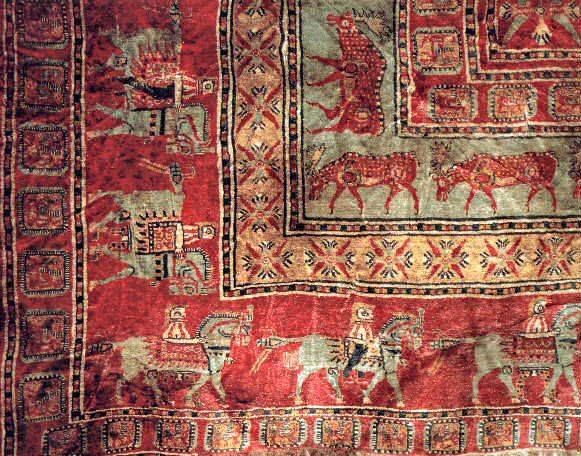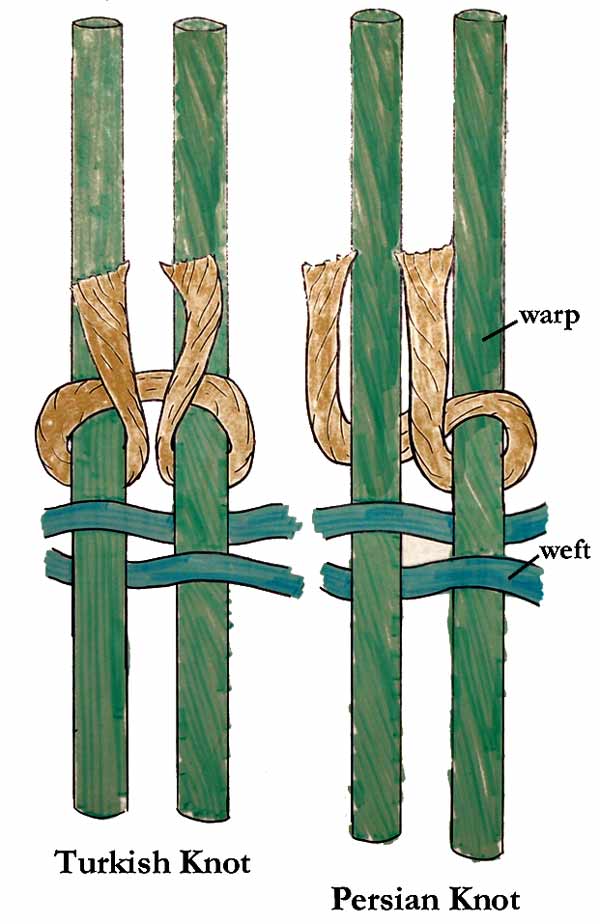Turks have been weaving oriental rugs, knotted with geometric motifs since the 11th century. It’s been discovered long before Persian rugs.
In the 17th Century, under the Ottoman Empire’s effect, Sultans choose Persian carpets with more complex patterns. This caused to reduce for numbers of artisans and change in their styles. Also with the influence of Islam, carpets are were not containing human forms. In 1920, deported minors were dealing with rug art. This was another drastic effect on the count of rug weavers.
Today, rugs re-discovered, recognized by the world. There has been a strong revival of interest in Anatolian rugs and kilims. Kilim is basically, carpets that woven without pile. Handwoven rugs are made of wool, cotton, and silk. Designs show variety by their origin. Floral designs, geometric designs and with the effect of Islam, prayer rugs which used for praying on it. Also, animal figures and special occasions are has been weaved too. Some rugs are made for purpose of hanging to walls not just decoration but for heat isolation as well.
Carpets are heavily dyed with blue and red color due to their origin of flowers, plants etc. Which is, makes healthier than machine woven rugs. Not to forget wool is a natural anti-bacterial material.
Anatolian, Turkish carpets are named after their origin village, city, or people. The finest ones are the silk ones, mostly from Hereke which is located in Istanbul.
Hereke carpets contain natural themes, therefore, pastel colors. 1sq meter can contain 360.000 to 1 million knots.
 There are also other silk rugs from Kayseri can be found. Distinctive difference is the way knots are tied. The carpets which are thicker consists of wool, cotton, and silk and are always tied with a Turkish knot. Turkish knot is a distinct knotting technique among carpets. Heavily used in Turkey therefore how it got its name.
There are also other silk rugs from Kayseri can be found. Distinctive difference is the way knots are tied. The carpets which are thicker consists of wool, cotton, and silk and are always tied with a Turkish knot. Turkish knot is a distinct knotting technique among carpets. Heavily used in Turkey therefore how it got its name.
Of course, one cannot go around counting knots to understand its quality, but one can examine the rug carefully, front and back, to see if the knots and colors are regular throughout.
There are also kilims, which more thin than a rug since its have no pile. Mostly used for wall hangings like a paint or sofa covers or to use outside while keeping guards to herd.
They are can be found almost everywhere in Turkey. Most of them are from Sivas or Konya come in all sizes.
There still carpets and kilims are woven in Turkey villages. Some locations can be visited or you can join to tours to see people while they making it.
Making carpet and kilim requires patience. A carpet making can take 6 months to years according to size and number of people who took care of it.
Cappadocia one of the best places for visiting carpet makers besides its nature.
Turkish Carpets dealing with some problems due to its popularity. Some sellers using different names for carpets to sell it easily or selling machine made carpets by making it look old with chemicals and using it in a crowded place. Aytek Rugs provides a certificate to prove their carpets authenticity.
Here are some brief info about carpet origins.
HEREKE
A village in Istanbul uses wool and cotton to make geometrical designs. Hereke text in Arabic letters can be seen on the corners from time to time. Silk Hereke carpets are also famous type from the same location as good as a Persian carpet.
MILAS
Milas is a district in Mugla. Wool on wool carpets generally with brown and beige colors.
LADIK / KONYA
One of the ancients locations in Turkey’s south central. Known with its extra durability with cotton and wool. Medallion and floral designs are the common ones.
KULA
Another town in Izmir. Wool on wool with multicolored, flower and geometric designs.
YAHYALI
Central Anatolia, it is the name of a town in Kayseri. Blue variant and dark red colors with its brown or green borders. The medallion is the common pattern.
DOSEME ALTI
A town in Antalya, wool in wool with red, green and blue colors.
YAGCIBEDIR
A town in Balikesir, Dardanelles region. Dark red and ocean blue (also known as Turquoise, the color of Turk) colors.